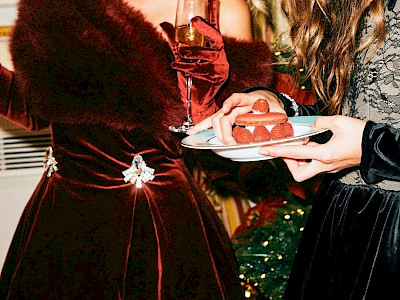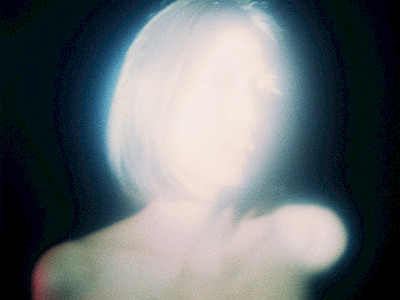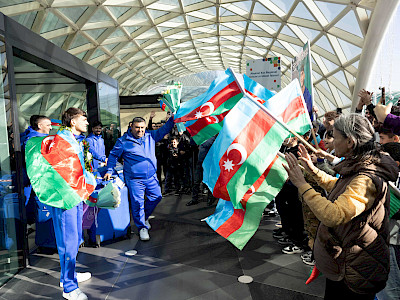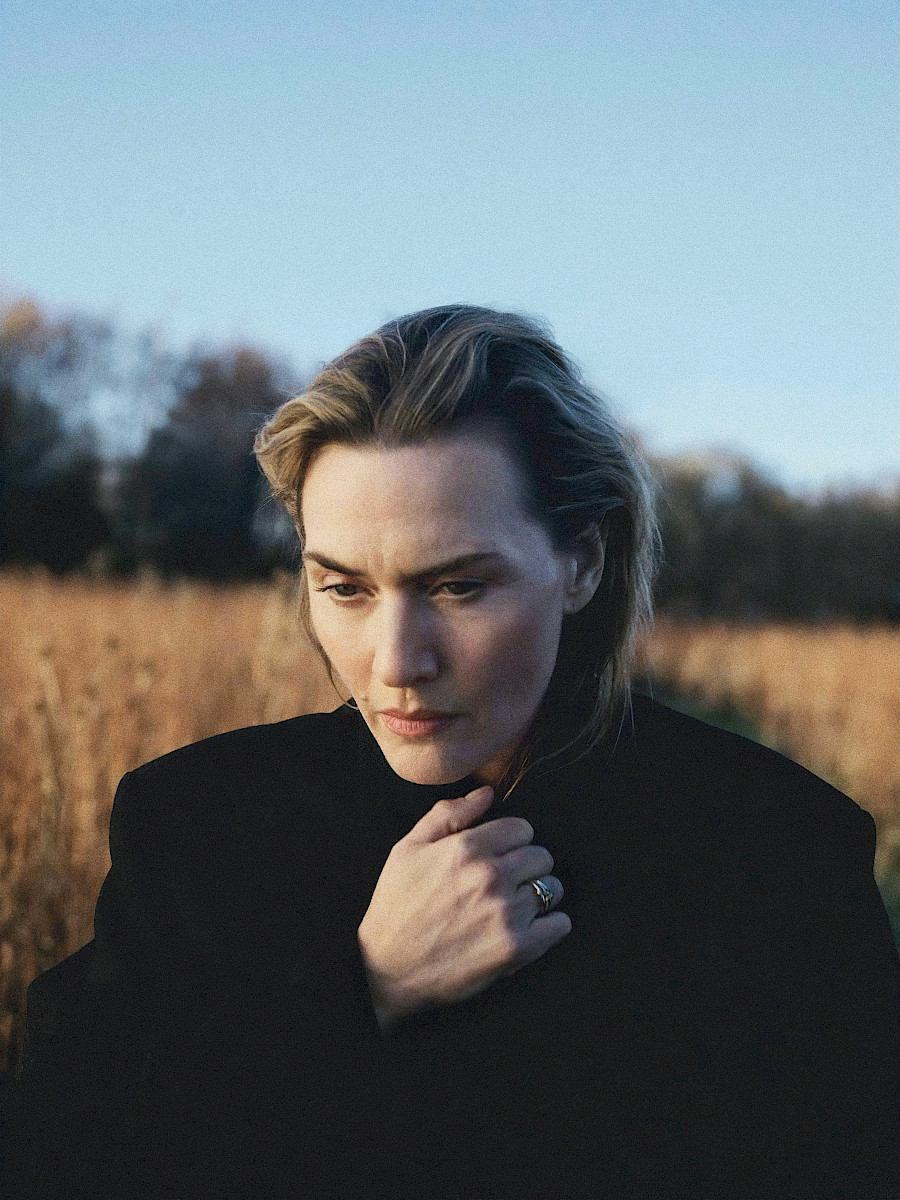
Kate Winslet began her illustrious film career thirty years ago with her film debut in Peter Jackson's “Heavenly Creatures.” Since then, she has firmly established herself as one of the most successful actresses of our time. Her acting range is impressive, spanning from box office blockbusters like the iconic “Titanic” to subtle arthouse masterpieces such as “Eternal Sunshine of the Spotless Mind.” Her portfolio also includes exquisite costume dramas like “Sense and Sensibility” and bestselling film adaptations such as “The Reader.” Winslet has not shied away from lighter genres, shining in the romantic comedy “The Holiday,” and recently wowing audiences in the sci-fi epic “Avatar: The Way of Water.” This year, she is back in the spotlight with Stephen Frears' series “The Regime,” where she plays the role of an oppressive chancellor.
In July, the European premiere of Kate Winslet’s new film “Lee” took place in Munich. In addition to starring as the lead character, Winslet also served as a producer and screenwriter. This biographical film chronicles the life of Lee Miller, a legendary model and photographer who began her career in 1920s New York as one of the most sought-after women in the fashion world. After relocating to Paris, Lee became the muse and collaborator of iconic Surrealists, including Man Ray. Her face was captured by masters such as Edward Steichen, Nicholas Murray, and Baron George Hoyningen-Huene. However, Lee Miller’s talent extended beyond the camera – she also made a significant mark as a photographer in her own right.
During World War II, Lee Miller became a war correspondent for American Vogue, breaking new ground in a field that had been dominated by men. Her photographs, including those documenting the liberation of Buchenwald and Dachau, stand as significant records of modern history. Lee was a woman of no boundaries: glamorous, creative, uncompromising, and daring. In this interview, Kate Winslet discusses this extraordinary woman and her impact on the art world.
INTERVIEW TATIANA ROSENSTEIN
PHOTO ©SKY UK LTD/KIMBERLEY FRENCH, FILMFEST MÜNCHEN, PRESS MATERIALS
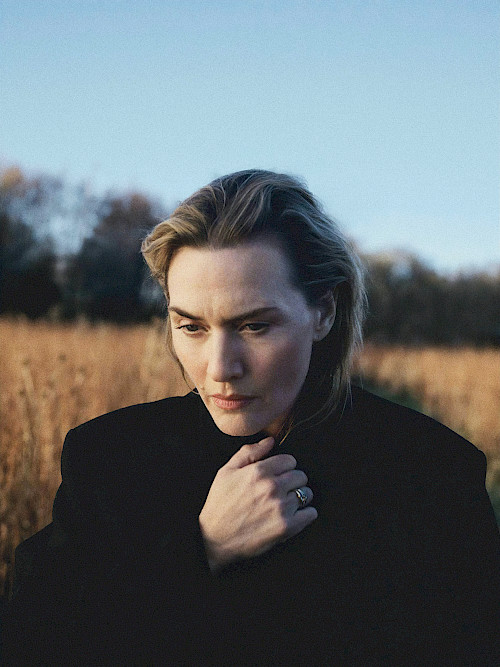
Why did you decide to be an actress?
I was one of four children in a noisy, chaotic family, with my father being the head of the household and an actor. At 16, I left school and took a part-time job in a café to save money for an audition in London. If I hadn’t become an actress, I believe I would have pursued a career in law, driven by a desire to restore justice and protect people. However, my passion for telling memorable stories took precedence over my other interests.
How do you feel about the fact that many people still associate you primarily with your role in “Titanic”?
It’s incredible! The film was made over a quarter of a century ago, and I’ve only seen it once – at the premiere. Since then, I’ve starred in over 40 films and TV series and had children. After “Titanic,” I faced intense scrutiny from the media, not only about my performance but also my appearance. I was criticised for being “too full” and told I needed to lose weight. It’s challenging to maintain self-esteem in a world where stereotypes dictate beauty norms, but I’ve learned to block out the noise. I was frequently reminded that, as a woman, I should settle for less. That’s why I stopped reading reviews after Titanic and no longer waste time on critics. Honestly, I’ve never been drawn to expensive studio projects. My passion has always been with independent directors and productions where I can take on challenging roles.
How much did you know about Lee Miller before you began working on the film?
Like most people, I only knew Lee Miller superficially before starting the film. Her famous photograph of Hitler’s bathroom is widely recognised, but I was unaware of many aspects of her life that we explore in the film. A friend of mine who works at an auction house once offered me a unique opportunity. Knowing my passion for antique tables with history, she informed me of a table that once belonged to Lee Miller. This table had been in her kitchen in Chiddingly, England, where she spent summers surrounded by notable guests. The house featured works by Man Ray, Picasso, Max Ernst, and Lee herself. I was instantly drawn to the table and thought, “Who was Lee Miller? What was her life like?” The curiosity marked the beginning of my eight-year journey into world of Lee Miller. I later met her son, Antony Penrose, who wrote “The Lives of Lee Miller” in 1985 and still manages her archives. He became my mentor, guiding me throughout the process. Whether I had minor questions before filming or needed advice, I could always reach out to him, and he would help. It was a true collaboration, and we would revisit scenes until I felt I had truly captured the essence of the mood.
Lee Miller is known to people in various ways. Some recognise her as a fashion model, while others remember her for her war photography. What facets of her life did you aim to highlight, and why?
Miller’s life spanned almost the entire 20th century. She was a friend to many artists. Pablo Picasso painted her with a bright yellow head to capture the brilliance of her personality. Even after the war, her life underwent significant changes: she became a mother, attended the elite “Le Cordon Bleu” cookery school, and rediscovered herself as a chef. Her biography could easily fill a 12-part series. However, I wanted to focus on just one film, specifically on the most challenging decade of her life — a period she never shared even with her son. As a war photographer for American Vogue during World War II, she brought a crucial female perspective to the news, though the horrors she witnessed also left deep emotional scars. Lee lived life on her own terms, often at a great personal cost. I aimed to portray her as a damaged middle-aged woman who went to war and documented its realities. I was struck by her unwavering support for women and her commitment to truth, despite the personal toll it took. After the war, she struggled with alcoholism and depression but eventually overcame it.
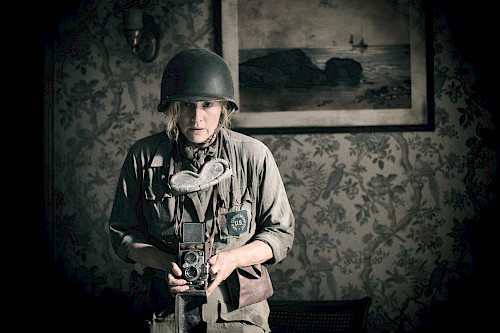 What was the most challenging aspect of portraying this role?
What was the most challenging aspect of portraying this role?
Imitating her American accent was initially challenging for me. I struggled with mastering the American dialect and speaking it fluently, but thanks to a wonderful coach, I overcame this obstacle. Interestingly, the most challenging scenes were not those set in the concentration camps. We aimed to avoid delving too deeply into the darkness of that period for the audience. I also faced a tough situation during our first shoot. While rehearsing a scene where Lee runs through the streets of St. Malo, which had been bombed in 1944, I slipped and injured my back severely, resulting in three large hematomas. Despite the pain, I chose to continue working as scheduled. Our days started early — with a 4 AM rise, hair
and makeup at 5 AM, and shooting by 7 AM.
This rigorous schedule reminded me of Lee’s own resilience, and it felt as if I was not only portraying her but also experiencing her life’s hardships firsthand.
What specifically attracted you to Lee Miller?
I admired how she maintained her freedom and independence even in the most challenging circumstances. People were captivated by her, and she could drive men wild even without makeup. Lee didn't conform to the ideal standards of her time- perfect hair and makeup. Instead, she welcomed guests into a cluttered room, was natural in her emotions, and always stayed true to herself. That’s the quality I aimed to convey in my portrayal: this unkempt, sometimes chaotic middle-aged woman who stands proudly and says, "This is who I am."
You also have a background in photojournalism and have made several documentaries on conflicts and sensitive subjects. What was it like to translate those kinds of stories into a fictional format?
I was shocked to realise that the events depicted in the film took place nearly 80 years ago, yet Lee Miller felt incredibly modern. She had the courage to make bold decisions in her time, as if she were living in the present. It felt like she was ahead of her era. Despite my background in photojournalism, I had never worked with a Rolleiflex camera before. For the shoot, I learned how to use it. The camera became more than just a prop – it felt like an extension of myself. We were fortunate to find an original model with a case from that period, which added a unique atmosphere to the project.
You also have a knack for captivating people. Your current spouse appears to be the perfect partner for you...
Ned (Edward Abel Smith's previous name) is truly my dream partner. Thanks to him, I can focus on my work, while he handles picking up our son from school and taking him to practise. Lately, my busy shooting schedule has meant less time with my family, even though I cherish the simplest everyday moments. I enjoy going to the supermarket, cooking dinner, swimming in cold water, taking long walks with our dogs, and just relaxing together watching TV.
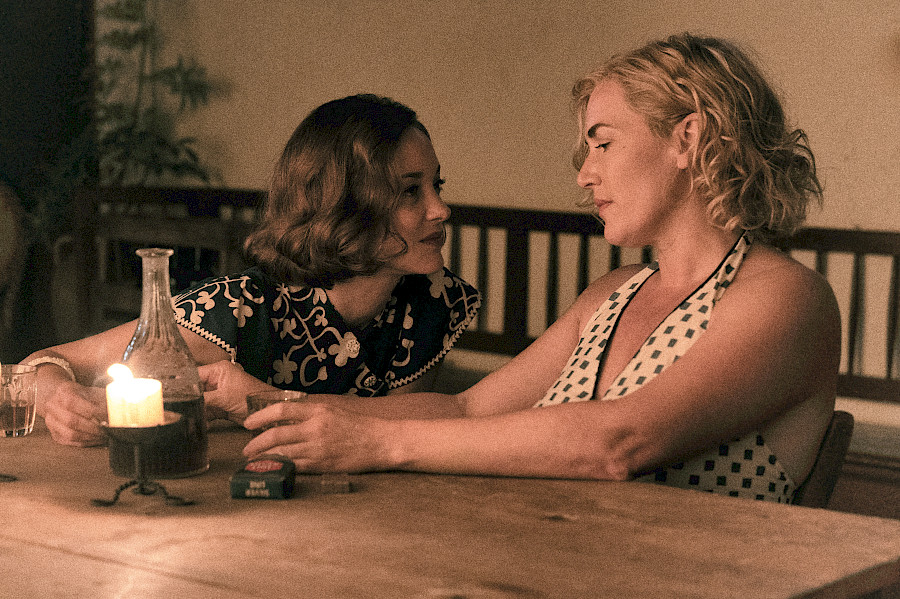
"It’s challenging to maintain self-esteem in a world where ste- reotypes dictate beauty norms, but I’ve learned to block out the noise"

